- Home
- Alison Weir
The Lost Tudor Princess Page 23
The Lost Tudor Princess Read online
Page 23
When Lennox found out that Nesbit had been sent to the Tower, he wrote at once to Cecil to say that he marveled at it, as Nesbit’s mission had concerned only Châtelherault’s right to the Scottish throne. He trusted that the Queen would still support him and Margaret in the recovery of his lands in Scotland, considering how gracious her forebears had always been to his wife and himself, and how “upright” the Lennoxes had been “from the beginning to this hour.” He prayed “that he may know the offence of his servant.”68
According to Thomas Bishop, the soothsayer whom Margaret kept in her house told her, when Nesbit was in the Tower, that the latter would not cause trouble for her, but that she would face a greater trouble yet all would be well in the end. Bishop asserted that she and Lennox did not cease to say “that they would set all upon six and seven”69—meaning that they would risk everything to achieve their aims.
On January 15 the Council explained to Lennox that Nesbit’s “strange conduct” and the genealogy they had found on him were the reasons why he was in the Tower. They were sorry that Nesbit’s “lewd handling” of Lennox’s affairs had been injurious to the Earl’s causes, but assured him that they could not have done otherwise.70
A week later Lennox replied that he in turn was sorry that his servant Nesbit’s conduct “should be the occasion of his own punishment and the hindrance of his [own] suit.” Lying through his teeth, he assured them that Nesbit’s mission had solely concerned Châtelherault, and desired them, “as the poor man has perhaps overshot himself in words, and considering the service that he [Lennox] has done to the Queen’s progenitors, that his servant may be set at liberty.” He also sent “his wife’s commendations to their lordships, with thanks for their remembrance of her.”71
But the interrogation of Nesbit continued, and it is clear that he talked. On February 3, 1560, Quadra informed King Philip that the Queen herself had ordered Nesbit to tell the Council what Margaret had instructed him to say to de Noailles. Immediately, they had him rearrested and sent for his mistress.
As soon as she arrived at court, Margaret herself was brought before the Council. She would only say that, as she was the nearest relative to the Queen of Scots and her husband was next in succession to the Scottish crown, she had sent to beg Elizabeth not to favor Châtelherault or his sons, and not to enter into a war with the French on this account, as she was sure that if the Queen of Scots were to die without sons, the French would certainly put Margaret herself on the Scottish throne. As Elizabeth was already under threat from the French in regard to Mary Stuart’s claim, the last thing she would have wanted to hear was that they had another claimant in mind, and the prospect of a new French-backed government in Edinburgh would have been anathema to her.
But Quadra did not believe that Margaret had any treasonable intentions, and thought that the interrogations of her and Nesbit were all part of a plot by the government to discredit Catholics. “These people are cleverly making sure of all the Catholics of whom they have any suspicion by summoning them hither on various excuses.”72
But Queen Elizabeth was suspicious, indeed paranoid, about the female cousins who might pose a threat to her crown. She had demoted Lady Katherine Grey, her next heir under the 1544 Act of Succession, from Lady of the Bedchamber to Lady of the Presence Chamber. In January 1560, Quadra reported: “The Queen calls Lady Katharine her daughter, although the feeling between them can hardly be that of mother and child. She even talks about formally adopting her. On the other hand Cecil tells me that neither she nor any other woman will succeed, in order to exclude also the Countess of Lennox.” If Margaret’s son Darnley were taken to France, that would really discountenance the English government.73
To preempt any French designs on Darnley, and because of the dangerous pretensions of his mother, Elizabeth took steps to obtain evidence that Margaret was illegitimate. The Queen’s allies, the Lords of the Congregation, led by Châtelherault, were also keen to see Margaret declared a bastard, as the young Queen Mary’s health was poor and they could not stomach the thought of the Lennoxes succeeding in Scotland.74 But all that could be found was evidence that Angus had been precontracted to another lady when he married Margaret’s mother, which was well known and had not prevented the Pope from declaring Margaret legitimate. Elizabeth was nevertheless determined to put an end to French influence in Scotland. On February 27, at Berwick, her representatives and the Lords of the Congregation concluded a treaty whereby she agreed to send a force to overthrow the Queen Regent and drive out the French.
On February 28, Lennox, in a letter sent to Cecil from Settrington, marveled “at his servant Nesbit’s crime, knowing his own uprightness.” He explained his dealings with the French ambassador, said he was determined to support his claims in Scotland against Châtelherault’s base birth, and again refused to recognize Châtelherault as governor. Nevertheless, asserting “his [own] innocence in all his transactions,” he assured the Queen that he would not undermine her efforts to support the Protestant Reformation in Scotland.75
Lord Darnley was clearly seen as a viable contender for the English Crown as well as that of Scotland. On March 7, Quadra wrote: “I understand that, if any disaster happens to the Queen’s life or estate, the Catholics will raise to the throne a son of the Countess of Lennox, and this talk, according to what Paget tells me, is well founded. Both the lad and his parents are strong Catholics, and they say he is very promising.” Elizabeth was determined to counter that, and signified her intention of declaring Lord Hastings, a distant cousin who was descended from the Plantagenets,76 as her successor, although Hastings himself was “quite of a different opinion and goes in constant dread of being sent to the Tower.”77 Yet according to Quadra, writing on March 15, “the people in the country are so anxious to have Lady Margaret’s son for king, that not only would he be universally accepted if the Queen were to die without issue, but I am told that at the first opportunity, even now, many Catholic lords would proclaim him king. In any case they will not have any more women to rule them as they are so afraid of foreign influence. He has the best right of any of the claimants, and is the best in every way, but it is feared that the French want to get hold of him.”78
—
In April 1560 an English army laid siege to Leith, the port of Edinburgh, which was held by French troops of the Queen Regent. The last years of Marie’s regency had seen her fighting a losing battle against the increasingly powerful Lords of the Congregation, who overthrew her later that April and set up a Protestant Great Council to govern on behalf of the absent Queen Mary. Châtelherault was its figurehead, but real power was held by Moray and Knox. On June 11, Marie de Guise died of dropsy at Edinburgh Castle, leaving the way clear for the new government to implement a Protestant reformation and drive out the French. Hostilities now ceased and a new treaty, signed at Leith, brought to an end Scotland’s “Auld Alliance” with France.
On July 6, at Edinburgh, another treaty, negotiated by Cecil, was concluded, providing for closer relations between England and Scotland, and for the recognition of Elizabeth as the rightful Queen of England, a clause that the Queen of Scots consistently refused to ratify. In August the Scottish Parliament, in defiance of its lawful Catholic sovereign, and without her assent, passed the legislation that would establish the Protestant Reformation in Scotland. The Catholic faith was outlawed and the celebration of Mass became a capital offense.
In September, Margaret’s red-haired cousin, James Douglas, now Earl of Morton, rode south, as ambassador for the Lords of the Congregation, to express their gratitude for Elizabeth’s support. On the way he visited his cousin Margaret at Settrington, Lennox then being away. Morton was now on the opposite side of the religious divide from Margaret, having become a reformer in 1557 and a founding member of the Lords of the Congregation.
Both Margaret and Morton would probably have heard how Robert Dudley’s wife, Amy Robsart, had recently been found dead, her neck broken, at the foot of a flight of stairs at Cumnor Pla
ce, Oxfordshire, and how Dudley had been forbidden the court pending the outcome of an inquest that would clear him of murder. It would have been around this time, according to the spy Forbes, that Margaret allegedly allowed her fool to disparage Dudley and his family by calling them “traitor’s birds,” saying Dudley had had his wife killed, and using “more odious words” than it was fit to repeat. Forbes also claimed that Margaret had said to Hugh Allen that a man of good reputation had told her that Dudley had syphilis.79 But Forbes’s testimony is suspect.
Margaret had continued to contest the right of Morton’s ward, Archibald Douglas, to the earldom of Angus, but Morton must have been very persuasive as he now prevailed upon her to relinquish her claim. However, because Lennox was not present to give his consent, her agreement held no force in law,80 and in fact Lennox refused to sanction it, for which Margaret was grateful, having regretted capitulating to Morton.
—
Thanks to Cecil’s brilliant diplomacy in negotiating the Treaty of Edinburgh, Elizabeth now stood high in the estimation of the Scots, and in August 1560, Moray proposed that she marry Châtelherault’s son, the Earl of Arran. Naturally it seemed to the Lennoxes that the Queen was favoring their rival for the Scottish throne, and soon afterward, to add insult to injury, she snubbed them by overlooking Lennox and appointing several prominent Protestants to the Council of the North.81 The couple had compromised themselves by their dealings with de Noailles, and that autumn they were summoned to court, where Elizabeth could keep an eye on them.
Lennox still wanted the Scottish throne, yet he feared that Elizabeth was doing her best to undermine his ambitions. On October 15 he and Margaret complained to Bishop de Quadra “that not only did the Queen treat them as prisoners because they were Catholics, but she was trying to injure their claim to the succession by helping the Duke of Châtelherault.” They begged King Philip to help them, as they were sure, with his favor, to recover what rightly belonged to them and restore Catholicism in Scotland with the aid of their friends. Quadra thought they were referring to what might happen if the Queen of Scots died, but they explained that they did not mean it in that way, but would attempt to overthrow her at once. What they were effectively asking Philip to do was send an armed force to support them in a coup.
Quadra was aware that the French ambassador had secretly been treating with the Lennoxes, but the Lennoxes had made it clear that they did not trust the French, and he feared “that they may be led by passion to do something rash.” Intriguing with the French had been rash, and they evidently knew it because they asked Quadra if, in the event of their being in danger because of it, King Philip would allow them to go to Flanders. He said he would write to his master and ask him, and urged Philip to answer without delay. He also sent him a genealogical tree of the kings of Scotland, “with a statement of the rights of the various claimants to the succession.”82
On November 20, having heard that the intention of Cecil and the Protestant Council was to make Hastings king, Quadra reported to Philip that the Lennoxes were worried about it and had begged leave from the Queen to go home to Yorkshire.83 Permission was evidently granted, because ten days later Lennox wrote from Settrington to Cecil, complaining that copies of the letter and genealogy he had sent him had been sent to the Hamiltons and his other enemies in Scotland. His friends there had seen them. He demanded that, since Morton was unjustly keeping the earldom of Angus from Margaret, and Glencairn was a traitor for deceiving Henry VIII and Lennox, his own affairs be kept secret. “And I hope in God that, if I and my wife prosper in our matters,” he added, it would contribute more to the Queen’s profit than anything his enemies could do. He desired pardon “for writing thus plainly” and concluded “with my wife’s hearty commendations to you and my lady your wife.”84
Margaret had brought back with her to Settrington a new servant, Mabel Fortescue, who on November 30 wrote to Francis Yaxley to thank him “for having placed her with my lady’s Grace, who as yet is very gentle and gracious.” Yaxley had also recommended his cousin, Mary Silles, to Margaret. Mabel’s letters deal only with domestic matters, not intrigues, but they reveal that Margaret kept in her household several young girls who were royal wards—the orphaned heirs to landed estates. Cecil had been appointed Master of the Court of Wards in January 1561, and it was his responsibility to ensure that the estates of each ward were properly administered during his or her minority, and to arrange for the care, upbringing and marriage of every ward in his charge. Wardships were granted by the court and could be a lucrative source of income, since the guardian gained control of the ward’s lands and could use a third of their revenues to his own advantage; he could also marry them off to his own profit. Needless to say, it was a system that was open to abuse, but Mabel had been lucky. In letters she addressed Yaxley as “My good Governor,” a term used to address a guardian, who would call his ward his “charge,” as Yaxley did. Probably both these girls were his wards, and the Lennoxes had agreed to them living in their household.85
Early in December Cecil laid down strategies for dealing with Lennox. If he caused further trouble, he was to be reminded that he had fulfilled none of the undertakings he had made in his marriage treaty, and that the Crown had had no benefit from him; and that he had sworn allegiance to the Queen as her naturalized subject and promised that he would never have any private dealings with a foreign power without her license. Cecil thought that Lennox’s pursuit of his restoration in Scotland was “but a color” for something greater. Elizabeth had been unusually forbearing. “The Queen is good lady to Lord Lennox and his wife in suffering them to enjoy those great livings without disturbance, considering what faint hearts they bear her, and against their own commodities [welfare, benefits] seek to be her enemy. He enjoys more of the Queen’s liberality yearly than he thinks. The Queen’s usage of him has been more gracious than that of other Princes, and his liberty not so liberally overseen as he reports.”
Cecil also referred to Lennox having in the past been in negotiations with Lucy Somerset, Lady Latimer, with a view to marrying one of her daughters—all co-heiresses—to Darnley. However, since the death of Henry II, there had been no more talk of that, and the friendship between Lennox and Lady Latimer had cooled more than a year before. The Lennoxes now had bigger fish to fry, and the event they had been anticipating occurred on December 5, 1560, when Francis II died in agony due to complications arising from an abscess in the ear, leaving Mary, Queen of Scots, a widow at eighteen.
CHAPTER 12
“Her Son Should Be King”
Margaret wasted no time in putting her long-cherished plans into action. Local tradition has it that she was residing at Whorlton Castle on the North Yorkshire moors1 when she wrote to Mary proposing a marriage with Darnley. This is said to have been in the autumn of 1561, but Margaret had broached the matter long before then. Lennox was already cherishing hopes that, if the widowed Mary returned to Scotland, she would reverse his attainder and restore his estates. On November 30, at Settrington, he had written to Elizabeth telling her that Galston and his friends in Scotland had advised him to sue for pardon and his lands to the Queen of Scots, “always with your Majesty’s advice. I intend still to follow your Majesty’s pleasure as in time past before that of my friends, trusting to have comfortable answer.”2
Mary’s marriage to his son would render Lennox’s restoration a certainty. But Darnley was Elizabeth’s subject, and both Lennox and Margaret must have known that she would not approve of the match. Indeed, she had already made it clear that anyone who stood in the line of succession must not marry without her express permission; as the law stood, to contravene that was to commit treason—and Margaret had good cause to know it, for the law had been passed as a result of her own folly in precontracting herself to Thomas Howard. But she, like her cousin Lady Katherine Grey, seems to have taken little account of that.
What happened to Katherine served as a chilling example of what could befall royal heirs who dared to marry
without the Queen’s permission. In December 1560, Katherine went through a secret ceremony of marriage with the man she loved, Edward Seymour, Earl of Hertford, son of the late Protector Somerset. It was a rash act on the couple’s part because Katherine was the Queen’s legal, if unacknowledged, heir. Katherine quickly conceived, and when, in the summer of 1561, she could conceal her pregnancy no longer, she appealed to Dudley for help, but he informed the Queen, and Katherine was sent to the Tower. Her child, a son, Edward, was born there the following September—another potential threat to Elizabeth’s throne.
—
Cecil was keeping a wary eye on the Lennoxes. By December 12, 1560, he had in his possession a document sent by the Earl’s friends in Scotland through Galston. They belived that if Queen Elizabeth helped the couple, Lennox would recover his earldom and Margaret the earldom of Angus. But they feared his “great sloth” in the matter; if he was to be more diligent, he would find more friends in Scotland.3
Three days later Cecil informed Lennox that Elizabeth, on hearing of the French King’s death, had postponed her appeal to Queen Mary on the Earl’s behalf. “I am sorry for this stay of your matters,” Cecil wrote, adding that he thought it likely that the delay would be to Lennox’s advantage, and sending his “humble commendations to my lady’s Grace,” assuring them both of his good intentions toward them.4

 Richard III and the Princes in the Tower
Richard III and the Princes in the Tower Britain's Royal Families: The Complete Genealogy
Britain's Royal Families: The Complete Genealogy The Lady in the Tower: The Fall of Anne Boleyn
The Lady in the Tower: The Fall of Anne Boleyn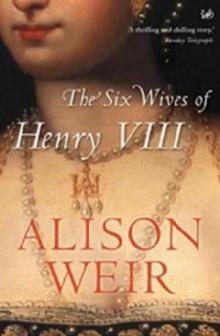 Six Wives of Henry VIII
Six Wives of Henry VIII Elizabeth of York: A Tudor Queen and Her World
Elizabeth of York: A Tudor Queen and Her World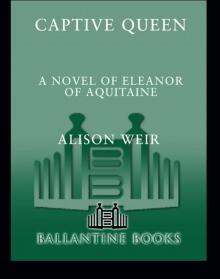 Captive Queen
Captive Queen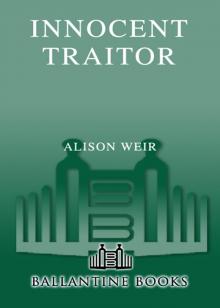 Innocent Traitor
Innocent Traitor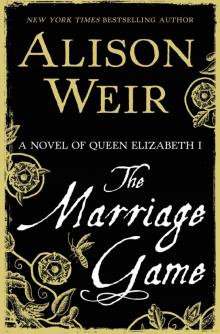 The Marriage Game
The Marriage Game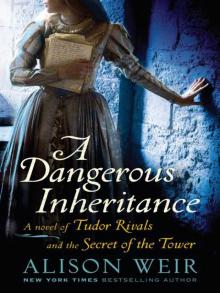 A Dangerous Inheritance
A Dangerous Inheritance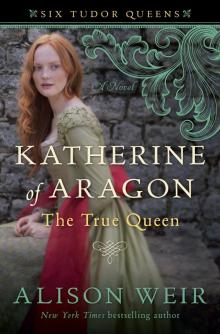 Katherine of Aragón: The True Queen
Katherine of Aragón: The True Queen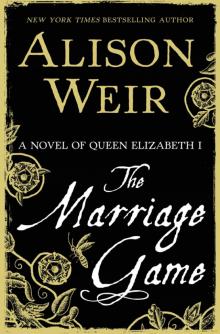 The Marriage Game: A Novel of Queen Elizabeth I
The Marriage Game: A Novel of Queen Elizabeth I Princes in the Tower
Princes in the Tower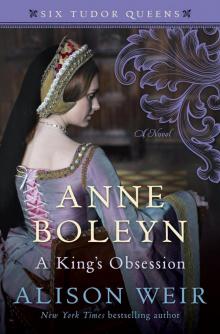 Anne Boleyn: A King's Obsession
Anne Boleyn: A King's Obsession Traitors of the Tower
Traitors of the Tower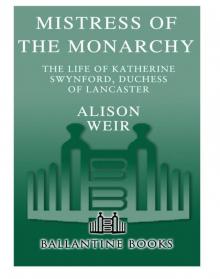 Mistress of the Monarchy: The Life of Katherine Swynford, Duchess of Lancaster
Mistress of the Monarchy: The Life of Katherine Swynford, Duchess of Lancaster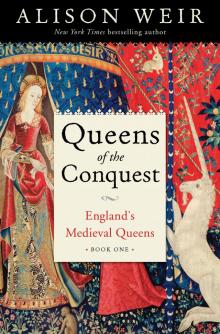 Queens of the Conquest: England’s Medieval Queens
Queens of the Conquest: England’s Medieval Queens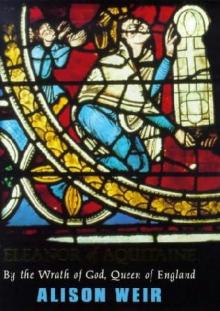 Eleanor of Aquitaine: A Life
Eleanor of Aquitaine: A Life Mary, Queen of Scots, and the Murder of Lord Darnley
Mary, Queen of Scots, and the Murder of Lord Darnley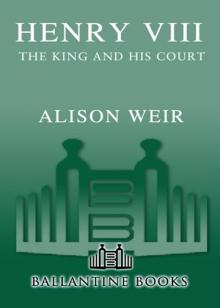 Henry VIII: The King and His Court
Henry VIII: The King and His Court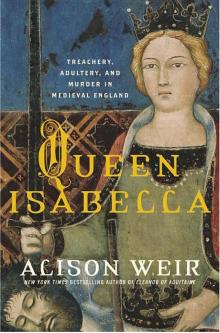 Queen Isabella: Treachery, Adultery, and Murder in Medieval England
Queen Isabella: Treachery, Adultery, and Murder in Medieval England Katheryn Howard, the Scandalous Queen
Katheryn Howard, the Scandalous Queen Arthur- Prince of the Roses
Arthur- Prince of the Roses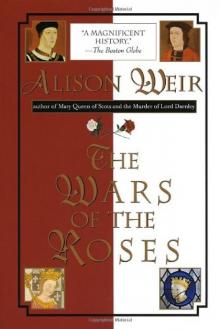 The Wars of the Roses
The Wars of the Roses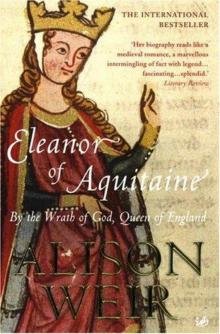 Eleanor of Aquitaine: By the Wrath of God, Queen of England
Eleanor of Aquitaine: By the Wrath of God, Queen of England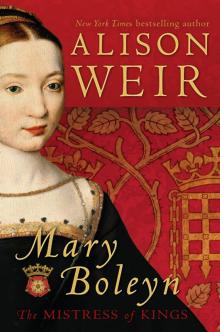 Mary Boleyn: The Great and Infamous Whore
Mary Boleyn: The Great and Infamous Whore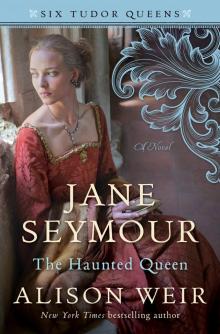 Jane Seymour: The Haunted Queen
Jane Seymour: The Haunted Queen Anna of Kleve, the Princess in the Portrait
Anna of Kleve, the Princess in the Portrait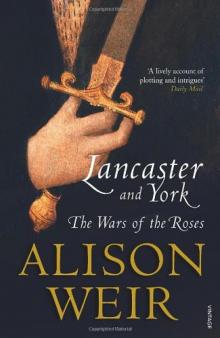 Lancaster and York: The Wars of the Roses
Lancaster and York: The Wars of the Roses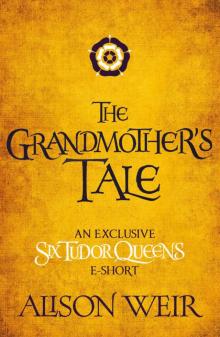 The Grandmother's Tale
The Grandmother's Tale The Princess of Scotland (Six Tudor Queens #5.5)
The Princess of Scotland (Six Tudor Queens #5.5)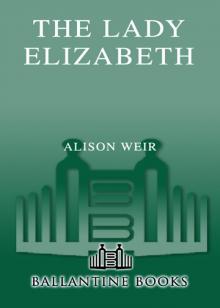 The Lady Elizabeth
The Lady Elizabeth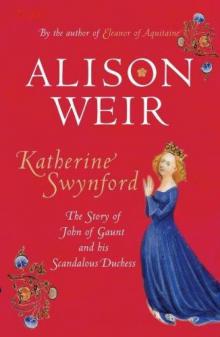 Katherine Swynford: The Story of John of Gaunt and His Scandalous Duchess
Katherine Swynford: The Story of John of Gaunt and His Scandalous Duchess The Curse of the Hungerfords
The Curse of the Hungerfords The Lost Tudor Princess: The Life of Lady Margaret Douglas
The Lost Tudor Princess: The Life of Lady Margaret Douglas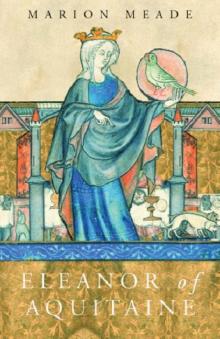 Eleanor of Aquitaine
Eleanor of Aquitaine Mistress of the Monarchy
Mistress of the Monarchy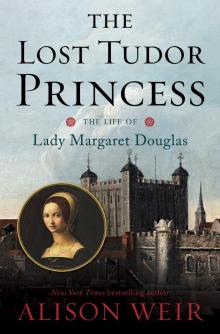 The Lost Tudor Princess
The Lost Tudor Princess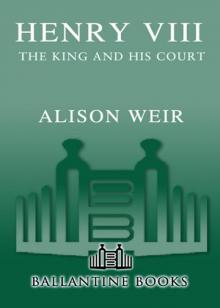 Henry VIII
Henry VIII Anne Boleyn, a King's Obsession
Anne Boleyn, a King's Obsession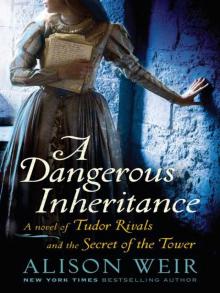 A Dangerous Inheritance: A Novel of Tudor Rivals and the Secret of the Tower
A Dangerous Inheritance: A Novel of Tudor Rivals and the Secret of the Tower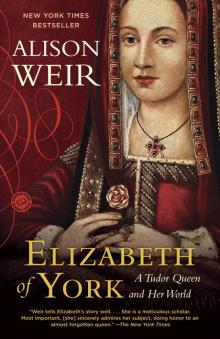 Elizabeth of York
Elizabeth of York Katherine of Aragon, the True Queen
Katherine of Aragon, the True Queen Katherine Swynford
Katherine Swynford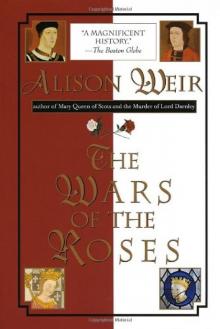 Wars of the Roses
Wars of the Roses Queens of the Conquest
Queens of the Conquest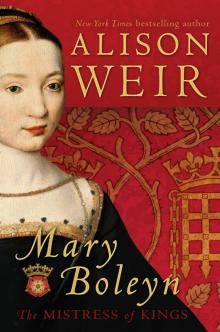 Mary Boleyn
Mary Boleyn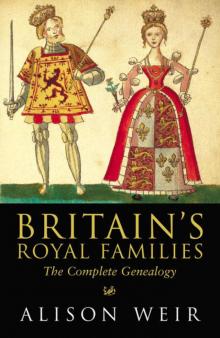 Britain's Royal Families
Britain's Royal Families The Tower Is Full of Ghosts Today
The Tower Is Full of Ghosts Today Life of Elizabeth I
Life of Elizabeth I Anne Boleyn A King's Obssession
Anne Boleyn A King's Obssession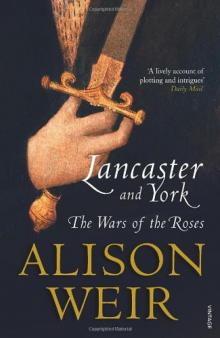 Lancaster and York
Lancaster and York Jane Seymour, the Haunted Queen
Jane Seymour, the Haunted Queen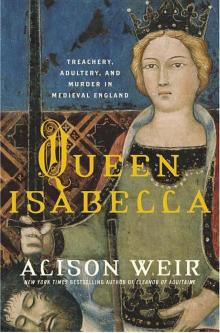 Queen Isabella
Queen Isabella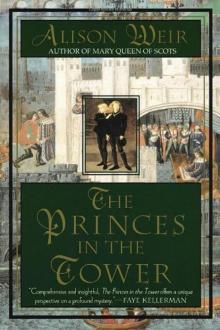 The princes in the tower
The princes in the tower